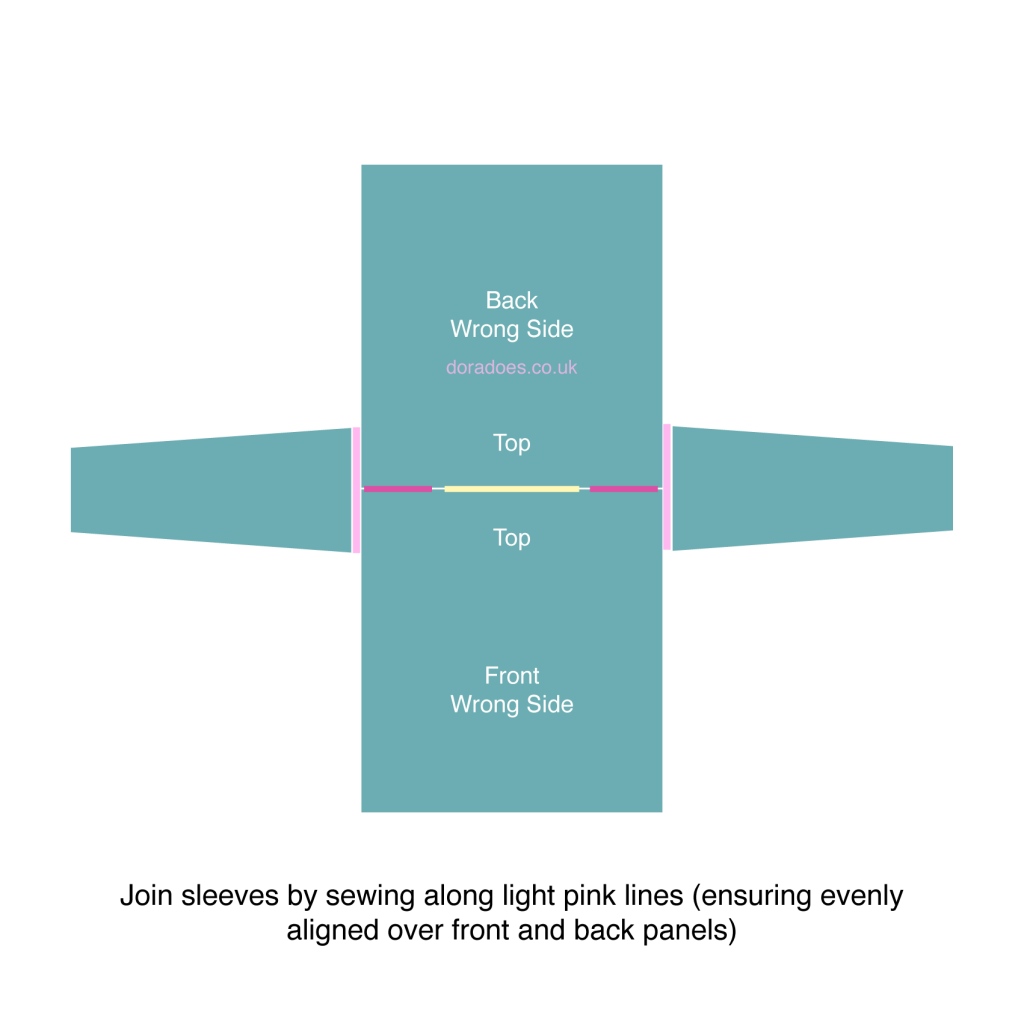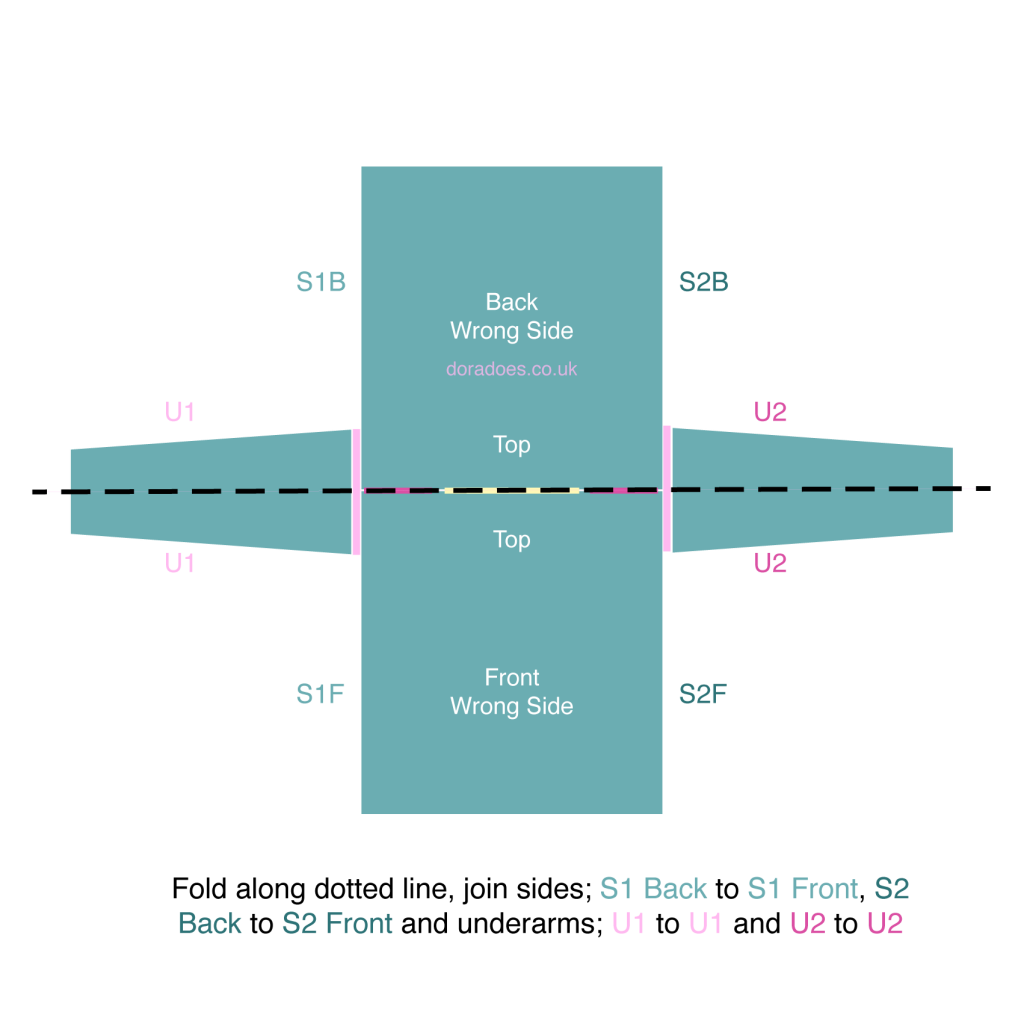How to construct a simple drop shoulder crochet sweater

The drop shoulder sweater design is the simplest type of crochet garment construction you are likely to come across in many ways. This post will talk you through how the construction works, regardless of the precise pattern.
Although top-down crochet sweaters are easy to make because you can make them in one piece without seaming, the drop shoulder offers a different sort of flexibility.
What is a drop shoulder sweater?
You can learn more about the different types of sweater construction in this article, but, in short a drop shoulder sweater is made from a front panel, a back panel and a panel for each of the sleeves.
The instructions are relevant for knitted garments too but the focus here is crochet.
In a basic crochet drop shoulder sweater (such as the So What Sweater), the front and back panels are the same, simple rectangles with no shaping. The sleeves may be also be simple rectangles with no shaping – so they are the same size at the shoulder as at the cuff (though many do have some shaping).
Conversely, drop shoulder sweaters can be much more intricate. You would still have the front and back panels, but there may be shaping around the neck, and the sleeves may decrease in width from the shoulder to the cuff. You can use complex stitch patterns or a single stitch.
There is a lot of scope to our humble drop shoulder sweater construction!
There are many ways to construct the drop shoulder sweater, but I am going to show you the most simple approach, the one I take at least!
Once you get the gist you can modify it to suit your style!
How to make a drop shoulder sweater without a pattern
Because of this modular type of construction, drop shoulder sweaters are simple to make without a pattern. You just work your panels to the desired size in whatever stitch pattern works, join them up and voila, there is your sweater!
You’ll want to make 4 panels; two body panels and two sleeve panels.
You should end up with something like this:

How to construct a drop shoulder sweater
Check out the video below for the tutorial which uses the Heart of Yarn sweater as an example. Keep reading for the written / diagrammatic instructions if video isn’t your thing!
Start with the shoulder seams
The rest of your garment will hang from the shoulder seams so this bit is important!
Once you have made and blocked your front and back panels, lay them out wrong side facing with tops aligned

Securely sew together the shoulder seams across the tops, leaving sufficient space for your head!
When it comes to seaming, I prefer to use the mattress stitch as it creates a flat seam. However, you can also use a whip stitch or crochet the panels together.
Add the sleeves
line up the centre of the shoulder-end of the sleeve with the outside edge of the shoulder seam and pin in place.
Make sure your sleeve reaches the same number of rows down from the top on on the front and back body panels to get an even sleeve.
Stitch in place ensuring your seams lie flat and there is no puckering.

Finish with the side and underarm seams
With the wrong side still facing, fold your garment in half along the neckline, align the bottom of the front and back panels, the underarms and the cuffs.
Pin in place then sew together from the underarm to the hem and the underarm to the cuff.
Repeat on both sides

Sew in any remaining ends and turn your garment the right side round.
You can then add a hem or additional cuff if that is part of the design!
I’ve said it before, I am not a fan of seaming and in many of my earlier designs in particular (such as the upside down sweater, which is a drop shoulder sweater with some shaping around the neck), I work the sleeves in rounds directly from the arm holes. I still love doing this today, but it’s not suitable for all designs.
I hope you find this useful and it gives you a little understanding of how simple crochet garments can be to make!
Happy Hooking
Dx







So does the neckline end up boat style?
Yes – in this one it does as there is no shaping. If you have shaping to the panels or change the width of the shoulders you will get a different shape neckline
Why are you being so bloody helpful, Michelle ? – don’t you WANT folk to use your own patterns ? Eh ? [grin]
Haha. Well you make a good point!! Just filling in the blanks I struggled to find when I was learning!!!
You have a very good heart.
😘